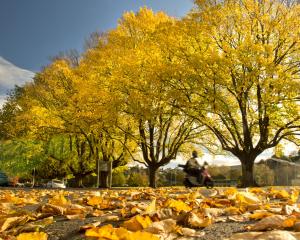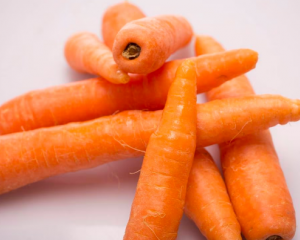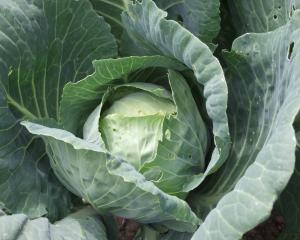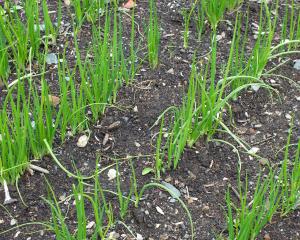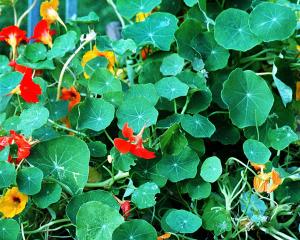Vegetables
Not a true spinach, New Zealand spinach (Tetragonia expansa) is invaluable for gardens that dry out in late summer.
Allow 60cm between each plant and sow in groups of two or three seeds, thinning later.
This plant prefers a hot, dry, sunny situation.
Growth is rapid and when plants begin to spread, the growing tips should be nipped out so lots of leafy shoot tips will grow.
Cut these frequently and always cook before eating.
Celery can be planted during the next three or four weeks.
The old method of digging a trench and filling it with compost or manure mixed with soil before planting has much to recommend it, but celery will grow well in any good soil.
Keep the plants well watered to prevent them running to seed.
Outdoor cucumbers also need rich, moist soil.
Raised beds are best if the soil is heavy.
This does not need to be sophisticated. Make a flat-topped heap, starting with a couple of sacks of horse manure to a depth of 15cm to 20cm, then well-rotted lawn clippings or compost and a layer of soil.
A heap about 30cm high is sufficient.
Sow seeds in groups of three at 60cm intervals along the middle of the bed.
Covering with a mini-cloche - a plastic soft-drink bottle with the top removed is ideal - will speed germination and shelter seedlings from cold winds.
Once they are growing, remove the covers and control growth of side shoots by cutting them off, one leaf beyond a fruit.
Cucumber plants need regular watering.
After rain, feed fruiting plants with weak liquid manure, the colour of Chinese tea.
Gardens benefit from regular hoeing, especially as ground starts to dry after heavy rain at this time of year.
Stirring soil thoroughly allows air and sun to enter and keeps weeds down.
It also reduces the amount of water required as the loose soil acts as mulch, reducing evaporation of moisture in the soil.
Broccoli is hardier than its close relative, cauliflower, and is easier to grow.
Broccoli seed can be sown now to mature in the coldest months of the year.
Varieties include Shogun, Purple Sprouting and the decorative-looking Italian Precoe.
Ground cleared of early potatoes, broad beans or peas can be used for broccoli.
Plant seedlings out at the end of December and during January.
Flowers
Roses appreciate heavy manuring.
This can be done by mulching, watering with liquid manure or top-dressing with commercial rose fertilisers.
Make liquid manure from sheep droppings or cow pats by half-filling a bucket with raw manure, topping up with water and leaving for a couple of weeks.
Dilute to the colour of weak tea before applying to the base of the plant after rain or a good soaking with the hose.
Chrysanthemums can have their centres pinched out, encouraging them to send out three or four strong side shoots for good flowers in autumn.
Half-hardy annuals such as asters, French marigolds and zinnias can be planted out now, ideally in rich soil.
Nasturtiums will thrive and produce more flowers than leaves in the poorest soils, provided they are in a warm, sunny position.
There are two types, trailing - which can cover a large area and will climb shrubs and fences - and the compact varieties, such as the Whirlybird strain, sold in individual colours, as well as mixes.
Salmon Baby is a semi-double variety suitable for hanging baskets, while Alaska and Jewel of Africa have variegated foliage.
The large seeds and fast growth make nasturtiums a good choice for introducing young children to growing flowers.
Fuchsias will benefit from a top-dressing of compost or old animal manure applied in early summer to keep the soil in good condition and retain moisture.
Gladioli should be growing strongly now.
Stake the plants if strong winds are expected.
Fruit
Gooseberry bushes put in this year should be summer-pruned soon, to build a well-shaped bush and allow sun and air to penetrate to the centres of the bushes.
Shoots growing into the centre or crossing other, stronger ones should be removed close to the branch from which they have sprung.
Mulch gooseberries with compost or stable manure and keep the bushes well watered.
Raspberry canes may have young sucker growths around their base.
It is a good sign, showing the plants are strong and virile, and promises well for next summer's fruit.
The new shoots are next year's fruiting canes and should be thinned and allowed to grow 1m or more.
Plums, apples, pears, peaches and nectarines on heavily laden trees should be thinned.
Unless this work is done thoroughly, the crop will be plentiful but small-sized and often misshapen because of the pressure from neighbouring fruit.
Remove the centre (king) fruit first.
Thinning is important to maintain balance in double and triple-grafted fruit trees.
If one leg looks weaker, be brave: remove all the tiny fruit so energy goes into strengthening the weak leg, rather than into fruit production.


